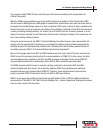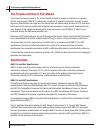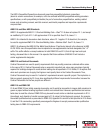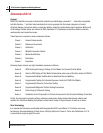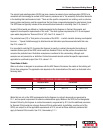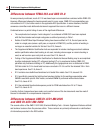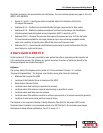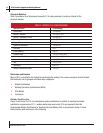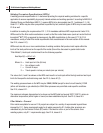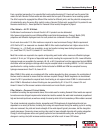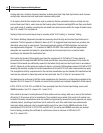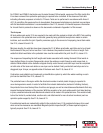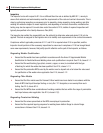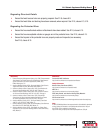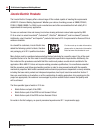
D1.8 Seismic Supplement Welding Manual
www.lincolnelectric.com
13
a) the weld is Demand Critical; and
b) the weld joins the beam bottom flange to a column flange; and
c) the weld must be made through a weld access hole in the beam web.
As mentioned above, the qualification of welders in accordance with Annex D is only required when all three
of these preceding conditions are part of the production weld. If any one is not present (i.e. a production weld
that is not made through a weld access hole) this qualification is not required, even though such a weld may
be Demand Critical. See D1.8, clause 5.1.1
The Annex D test was designed to simulate the restricted access conditions that are typically associated
with welding a beam bottom flange to a column in a moment connection. However, unlike the production
connection, the qualification test plate is a butt joint, permitting easier inspection and testing of the
completed weld. See D1.8, Annex D Figure D.1, D.2 and D.3.
Two test configurations are described in Annex D, known as Option A and Option B. Option A is to be used
when steel backing is specified on the WPS, while Option B is used for open root joints, or joints backed with
ceramic, copper or other non-steel materials. The type of test to be taken is dependent on the type of backing
(if any) that will be used in production, and as shown on the WPS. See D1.8, clause 5.1.3 and Annex D clause
D3.2, D3.3.
While the test plate can be tacked together by anyone, the welder must affix the weld tabs to the test plate.
Also, the welder is required to measure the preheat and interpass temperature of the test plate assembly.
See D1.8, Annex D clause D3.1.1, D3.1.3.
As is the case for D1.1, welders taking the Annex D test must qualify by welding process. In addition, the
test plate must be welded with a deposition rate equal to or higher than that which will be used in production.
It is wise, therefore, to use a slightly higher deposition rate in the welder qualification test so that the welder
will be qualified to use all production WPSs. See D1.8, Annex D clause D3.1.2
After the test plate is complete, the various restriction plates are removed and the test plate is visually
inspected. Then, at the Contractor’s option, the test plate is non-destructively (NDT) or mechanically tested.
NDT options include ultrasonic inspection (UT) and radiographic inspection (RT). Four bend tests are used
for mechanical testing. See D1.8, Annex D clause D4.
The Annex D test is similar in design, and identical in purpose, to a similar test prescribed in FEMA 353.
Welders who have been qualified previously using “similar restricted access plate tests” before D1.8 was
issued are not required to take the Annex D test, providing all the time continuity requirements are still met.
See D1.8, Annex D clause D1.
The qualification of a welder who has taken the Annex D Supplemental Welder Qualification test is valid for
36 months, providing the D1.1 continuity requirements are also met (i.e., the process is used at least every
six months). See D1.8, clause 5.2.



